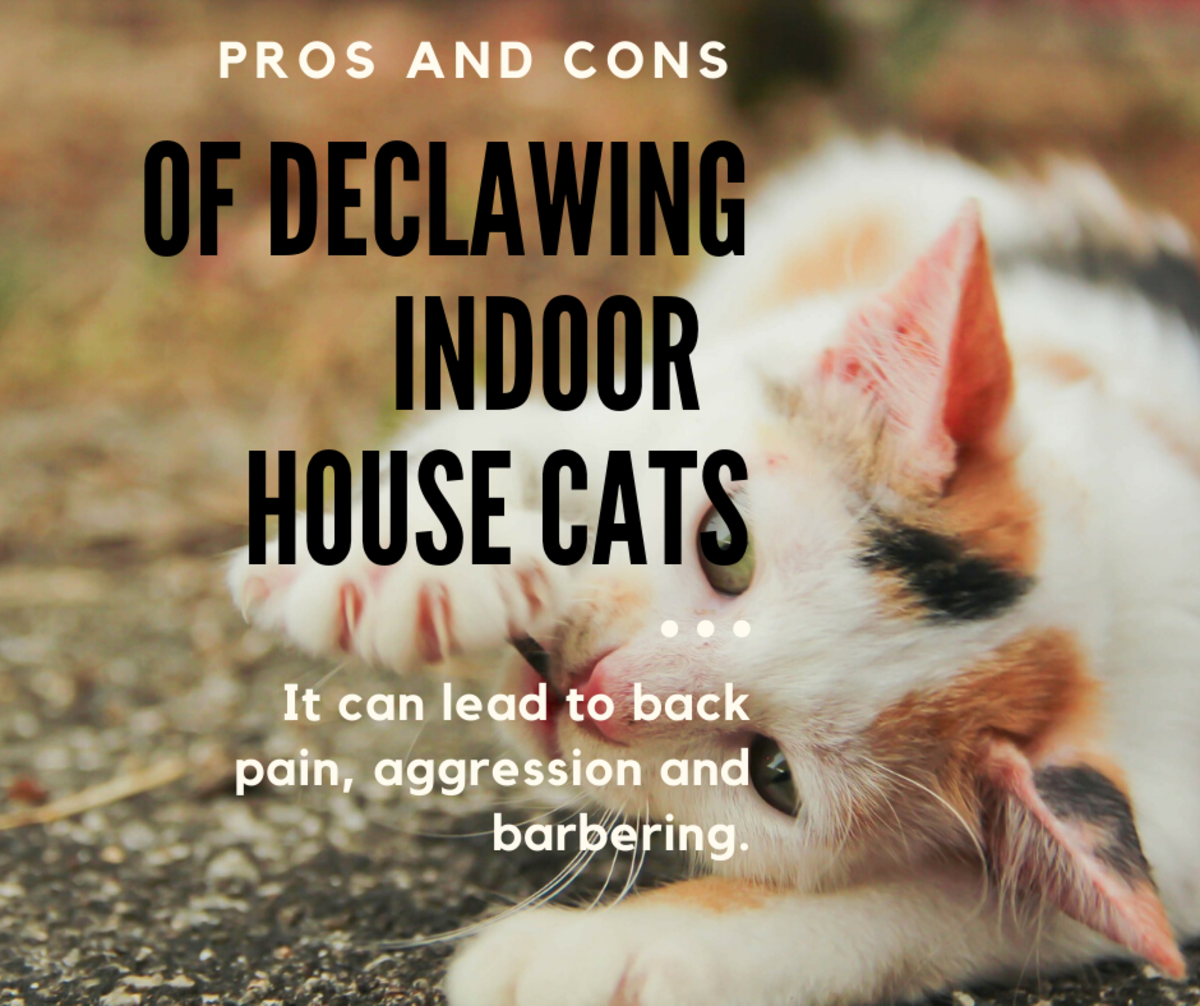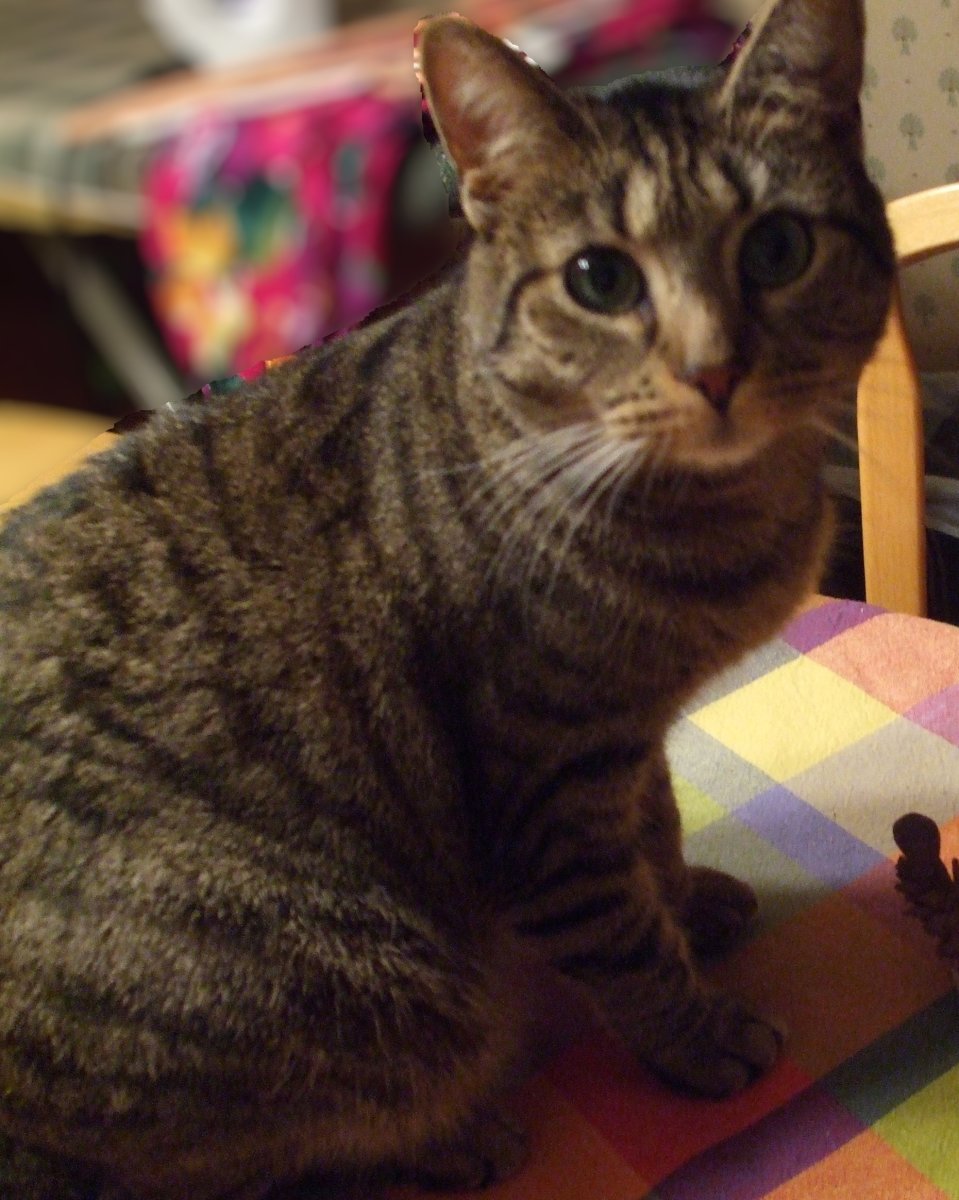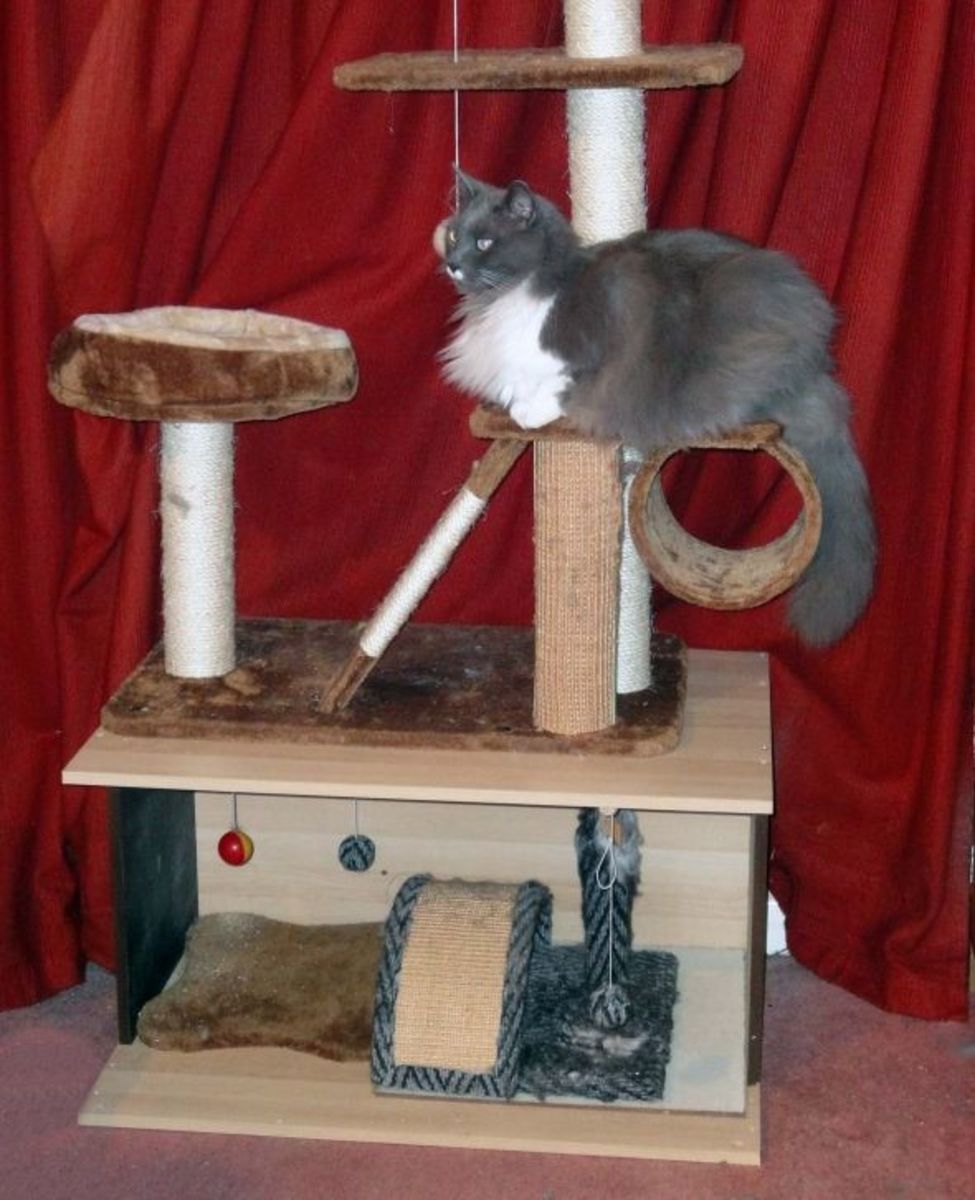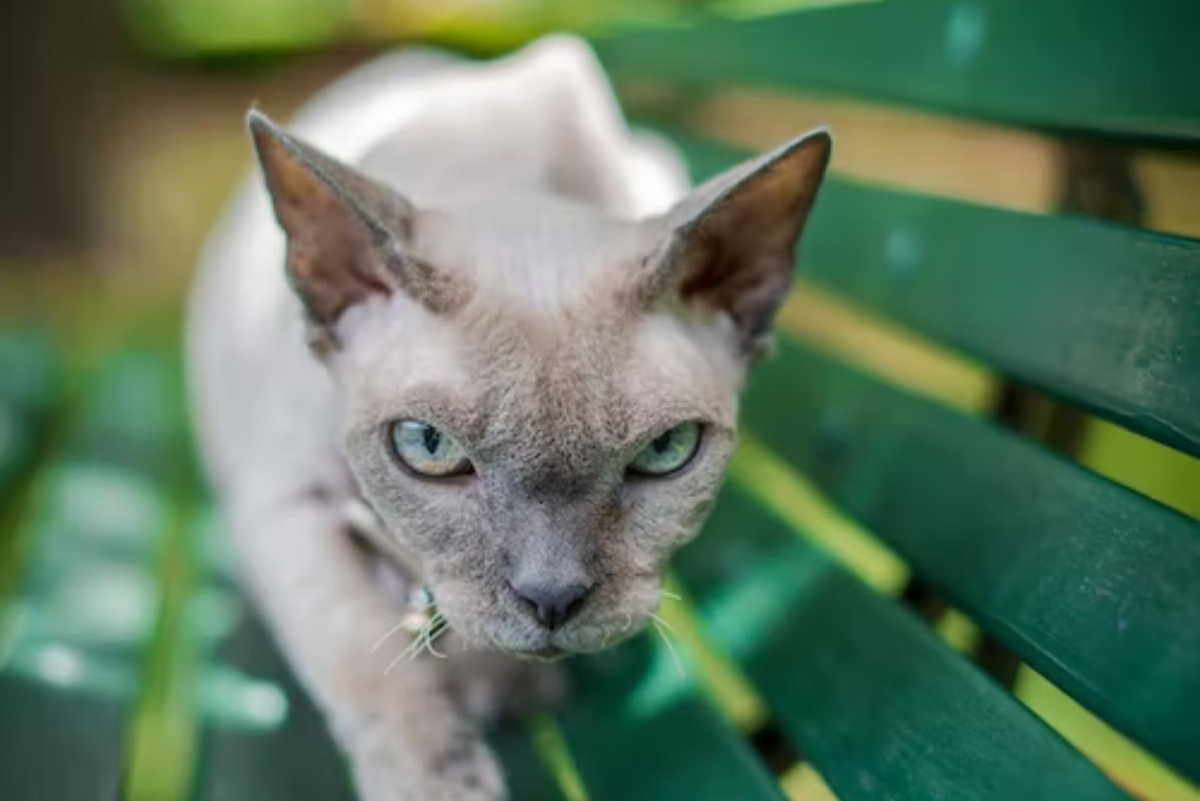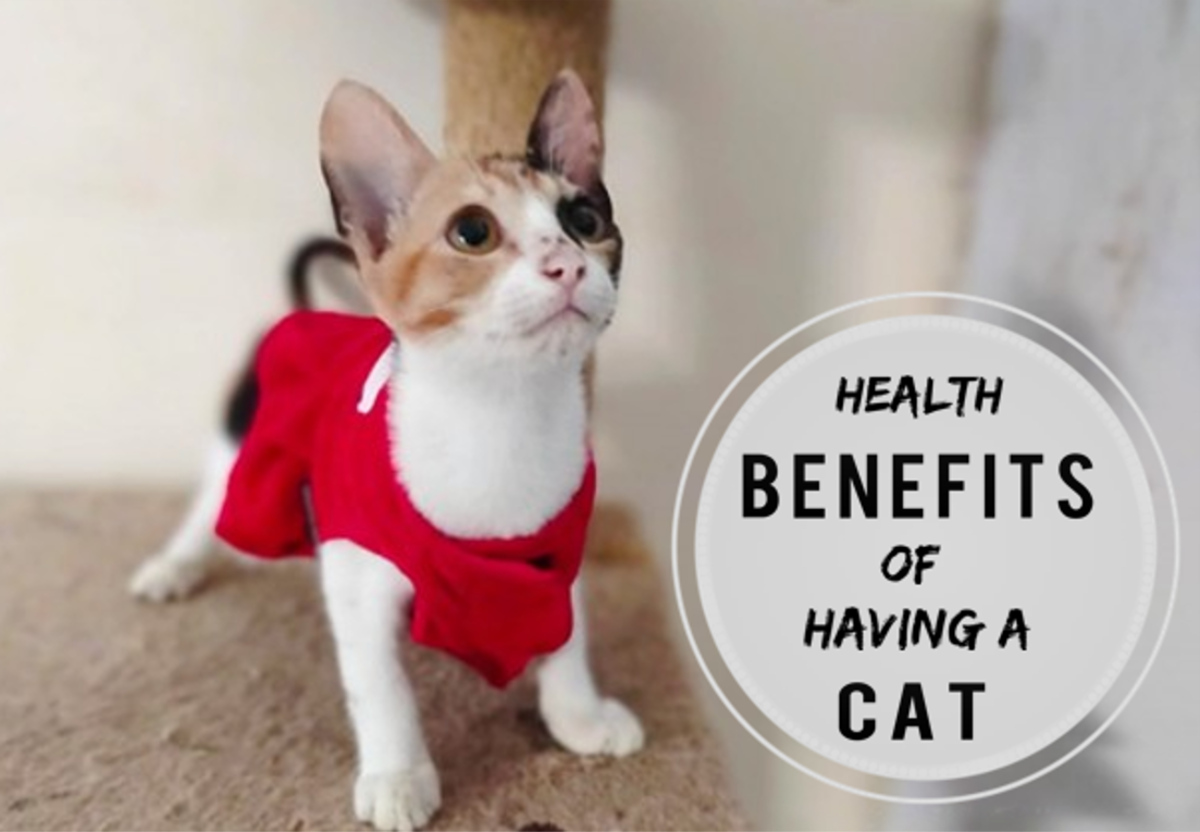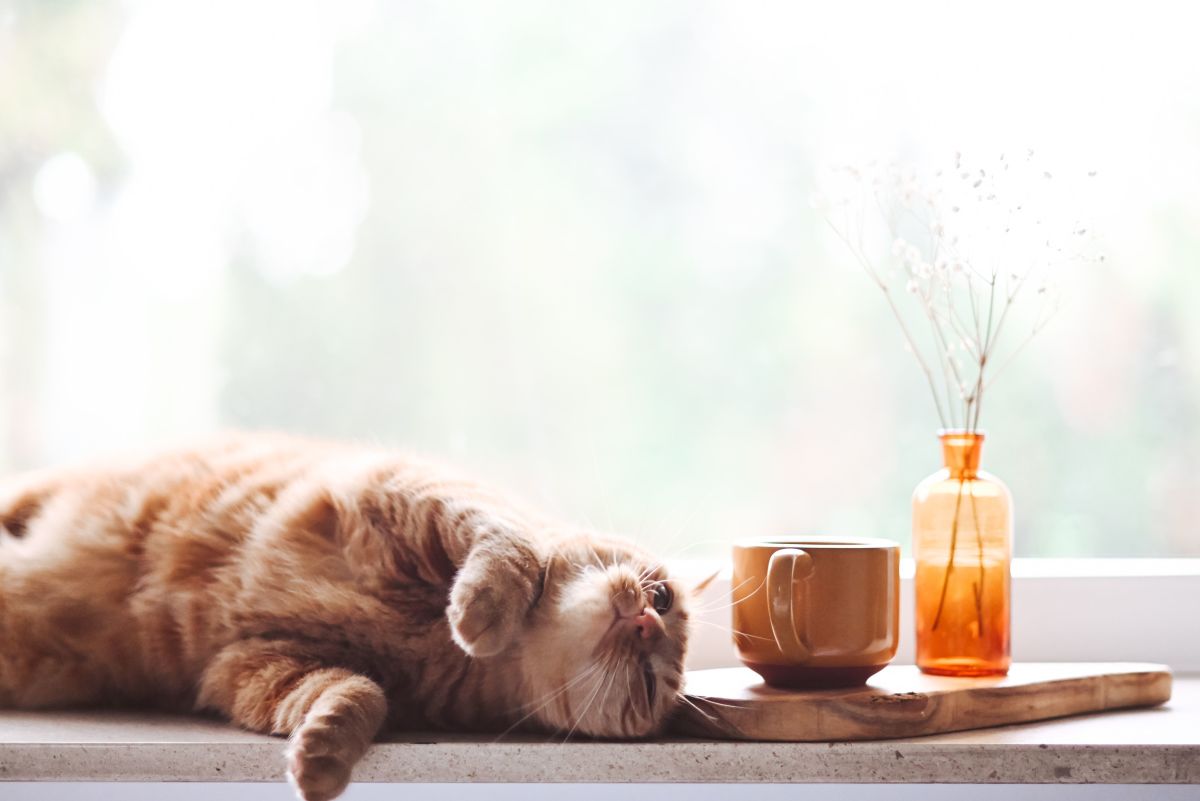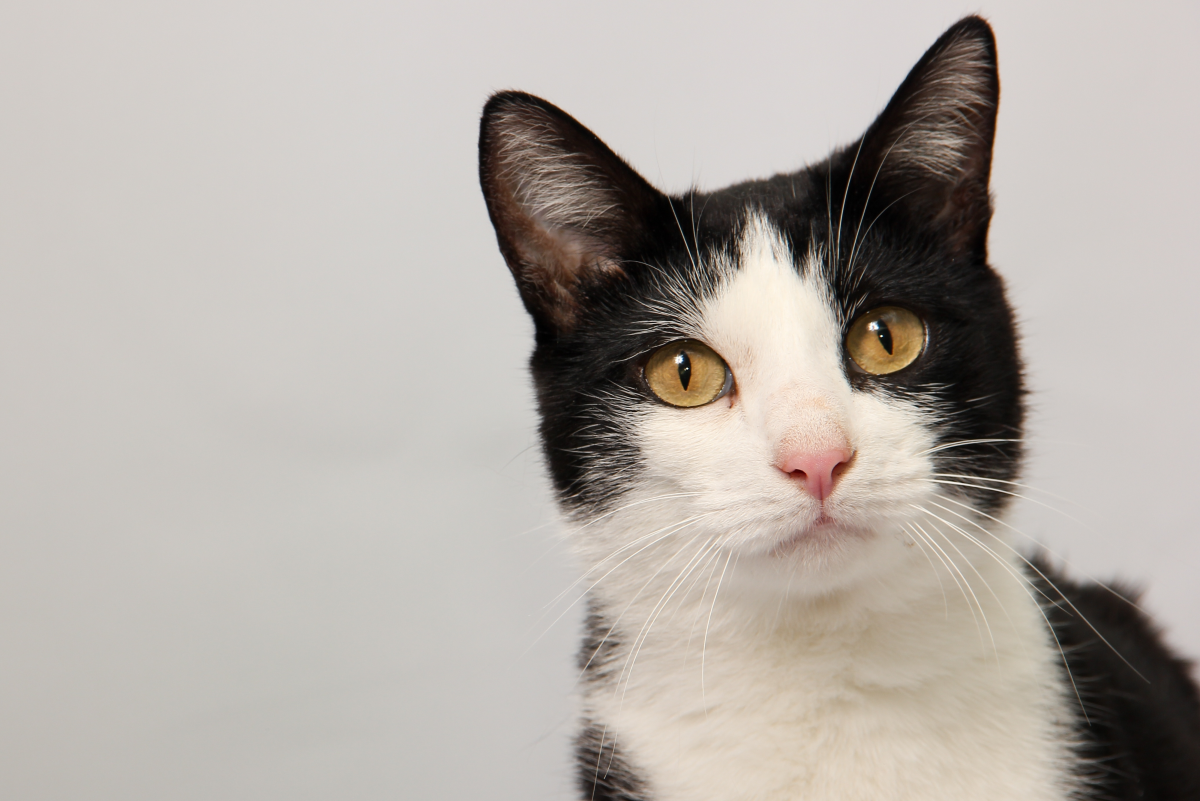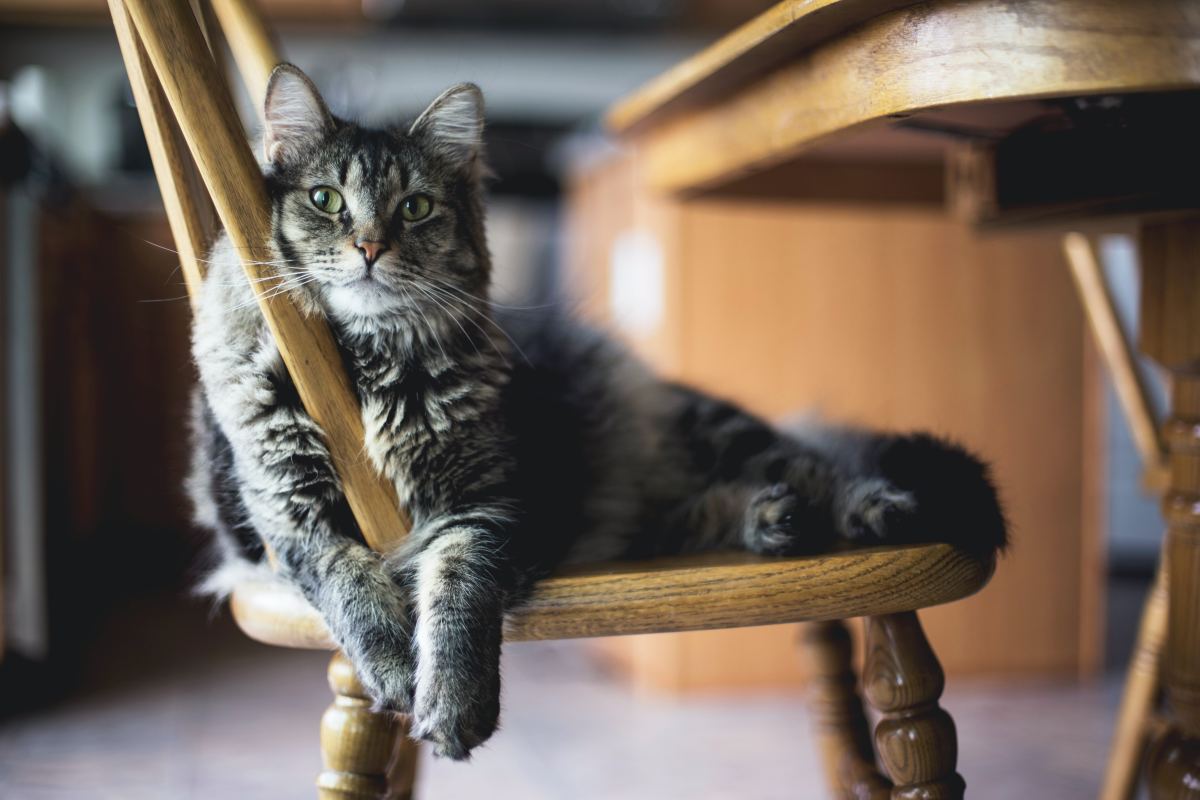What You Should Know About Declawing
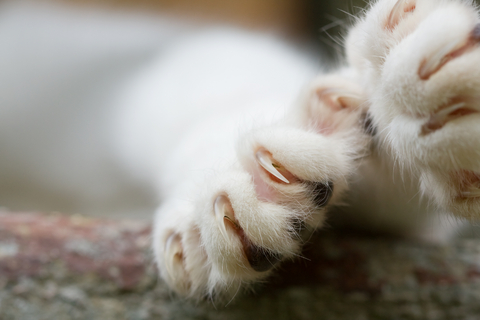
Sources are listed at the bottom of the article along with links when applicable.
Felines are naturally designed for grace, balance and agility. As the British author and Nobel Prize winner Doris Lessing once said: “If a fish is the movement of water embodied, given shape, [the] cat is a diagram and pattern of subtle air.” Key parts of this design are, surprisingly, the claws.
In spite of this however, thousands of cats across America undergo a painful surgery each year that deprives them of these important tools. This surgery is called an onychectomy but is more commonly known as “declawing”. To the average American citizen, declawing is as harmless as getting a cat spayed or neutered. This is not the case.
People must understand that scratching is a natural and necessary behavior that comes with every cat. This does not mean that one must accept the destruction of their furniture, only that there are alternatives and each feline will need something that is okay to scratch. Contrary to popular belief, cats can be trained and will easily learn to use a scratch post rather than that priceless living room set. Declawing is the lazy solution to the scratching “problem”, and many innocent felines pay the price for this laziness. Declawing should be made illegal in the United States, as it has been in at least twenty-three major countries across the world, because it forces a cat into an unnatural lifestyle and causes physical and in many cases psychological damage.
A cat's claws are an important part of its natural life. Many pro-declaw owners argue that domestic cats no longer need claws if they are kept inside. What they don't understand is that these claws are not merely for catching prey. Cats are digitigrades which means they walk on their toes. Their back, shoulder, paw and leg joints, muscles, tendons, ligaments and nerves are all designed to support this lifestyle. The claws of the cat play a key role in this. They are used for balance and to stretch the muscles in their legs, back, shoulders and paws. These muscles can only be stretched using a method similar to isometric exercising for humans in which a cat digs its claws into a surface and pulls back.
The claws and bone removed during an onychectomy are also very important to the conformation of a cat's foot. Their absence would cause back pain similar to that experienced by humans while wearing improper shoes for extended periods of time. In addition, a declawed cat will shift its weight off its sore toes and will develop an altered gait. This unnatural gait would cause a great deal of stress on the felines joint and spine causing damage and possible arthritis. There have been studies done that confirm this.

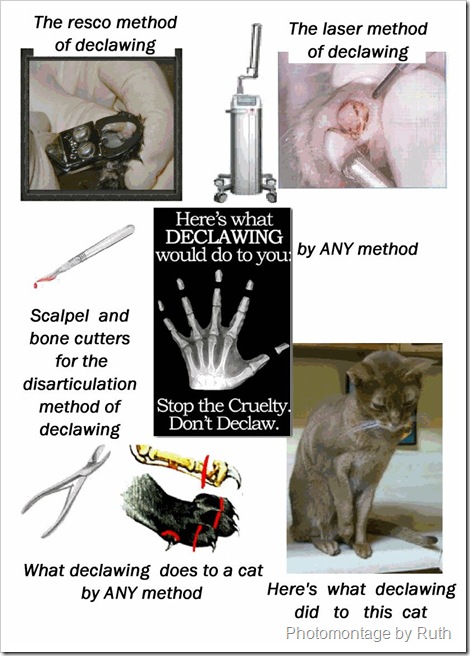
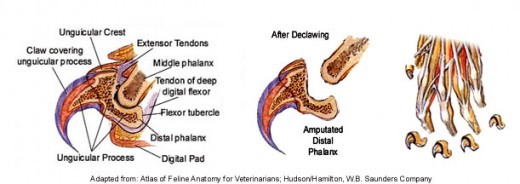
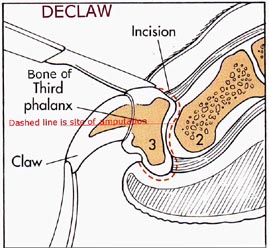
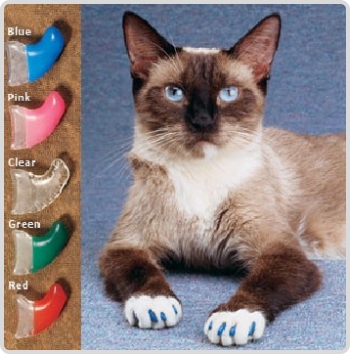
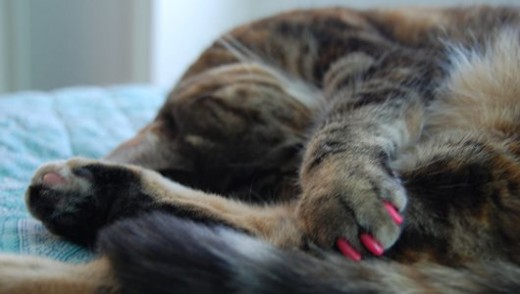
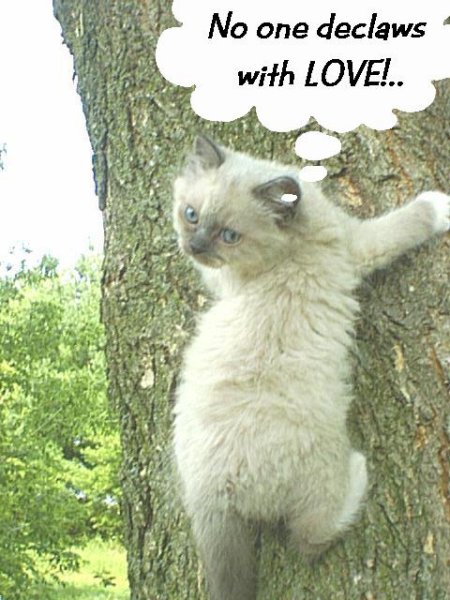
Cats also use their claws for grooming. In addition to licking, they also repeatedly scratch themselves. This removes skin irritations, dislodges dead hairs and combs out tangles in the fur. Without claws a cat cannot effectively perform these tasks and the cleanliness that attracts many cat owners suffers as a result. A cat is incapable of using its teeth to reach important areas of the neck, head and mouth for grooming and they also do not work as well on the rest of the body.
The claws are also an important tool for self defense. With their claws that can climb to safety or when cornered they can leave a nasty scratch on a would-be attacker. Cats also use their claws to mark their territory which is, of course, one of the main reasons cat owners decide to inflict this surgery upon their feline friends. This scratching behavior is entirely instinctual and natural. By scratching, a cat creates a scent and visual marker for its territory. It also seems to make them happy. It is very common for owners to report that upon arriving home their cat rushes to the scratch post.
Cats were created with claws for a reason.
These claws serve many functions that are incredibly important to the overall health and happiness of the animal.
Like any surgery, declawing is risky and the complications are painful. While many think of the claw of a cat as the feline version of a fingernail, this is not at all an accurate comparison. The claw of a cat is actually part of the last bone in each toe. To completely remove the claw and prevent it from growing back, the entire bone must be amputated. There are two common techniques for this surgery; the scalpel and guillotine trimmer techniques. During the scalpel method, the claw is gripped with a small clamp while the surgeon uses a scalpel to slice through skin, tendons, nerves and blood vessels around the distal phalanx. The more common guillotine trimmer method consists of using a nail trimmer to half rip, half tear through the tissues. The wounds are then closed with sutures or surgical glue and tight bandages may be applied to restrict the tissue's ability to swell, causing more pressure and intense pain. There is also a new form of the surgery, in which a laser is used to cauterize the blood vessels. While there is less bleeding, it is still a declaw surgery and the consequences are the same.
In a study carried out by Washington State University of Veterinary Medicine, 163 cats were declawed. At least fifty percent had one or more complications soon after surgery including extreme pain, uncontrolled bleeding, lameness and swelling. These symptoms were more common in those with the trimmer declaw. After being released from the hospital, at least twenty percent developed additional complications such as infection, nail regrowth, and continued lameness. Other complications seen after the surgery include damage to the radial nerve, hemorrhage, bone chips that prevent healing and chronic back and joint pain. Paw ischemia is also a possible problem. This is defined as a lack of oxygen to the tissue due to blockage of a blood vessel. Another complication is exposure necrosis of the second phalanx. Necrosis is the death of cells. These are serious conditions. Yet one study shows at least thirty-one percent of American cat owners admit to putting their beloved companions in a condition that could lead to these types of problems for the sake of their couch or favorite chair.
Although it is widely disputed among veterinarians and cat owners, personality and behavioral changes are commonly reported after surgery. Many owners report that their cat “has never been the same”. It is true that many cats carry on after surgery without signs of being affected by it. Cats, like many other animals, instinctually hide pain. In the wild, most predators target the sick and elderly. An animal that openly expresses pain will not stay around for long. They are also adaptable and will simply learn to live with any pain afflicting them. Not all cats adapt to life without claws as easily, however. Some cats that were once friendly and social become fearful and reclusive, spending their lives under the bed or on top of the refrigerator, shying away from all human contact. Hiding becomes their only defense against real or imagined enemies. They lose all confidence because they know they can't defend themselves.
One common reason for declawing is “the cat scratches everyone.” One reason for this is the tendency to play with kittens by using our hands. When that cute little kitten grows up it may associate fingers with toys. If a cat is scratching people there is a reason. People must remember to respect these animals and learn to read their body language. They will let it be known if they want to be left alone. Once the claws are removed, this line of defense is gone. It is common for cat owners to report that their once sweet-tempered cats turn into biters after being declawed. Biting is far more dangerous than scratching as it will cause deeper wounds and transmit bacteria infested saliva.
Another problem faced by owners of declawed cats is litter box rejection. After surgery when walking is still painful a cat may associate anything it walks on with pain including the litter box. In one survey, ninety-five percent of calls about declawed cats related to litter box problems while only forty-six percent of calls about clawed cats were litter box related. Of those clawed cats that did have problems, the majority were older cats or had some sort of physical ailment.
There may be no proof solid enough for American Veterinarians and scientists to convince them that cats suffer psychological damage from these amputations but the observations of cat owners makes it hard to believe otherwise.
As a pet owner, a person has a responsibility to give their new companion the quality of life it deserves. Before bringing one of these fascinating creatures into the home, a human must understand the animal and accept that cats come with claws. These claws must be trimmed and one or more scratching posts must be provided. For those who find it difficult to maintain trimmed nails there are still alternatives to declawing. There are vinyl caps for cat's claws called Soft Paws. Designed by a veterinarian, they are non-toxic and easy to use. Once applied they last four to six weeks. If this is too much work there are methods to discourage cats from certain surfaces. Placing double sided tape or aluminum foil in certain areas is often effective and can be removed after a short time. One should always remember: never physically punish a cat. Unlike dogs who connect punishment with their own actions, cats will only learn that their human is unpredictable and should be avoided.
When treated properly, these animals give their human friends many years of love. In return they should be left as they were made; with the grace and beauty that comes from every inch of their feline form... including eighteen small claws.
Countries That Have Outlawed Declawing
England
France
Norway
Ireland
Portugal
New Zealand
Japan
Italy
Switzerland
Denmark
Slovenia
Belgium
Austrailia
Yugoslavia
Wales
Austria
Netherlands
Finland
Brazil
Scotland
Germany
Northern Ireland
Malta
Israel
If you found this hub interesting, you may also want to take a look at these:
The Funny, Sweet and Crazy Habits of a Cat
The Awesome Intelligence of Cetaceans Part 1
Works Cited
Encyclopedia of Cat Health and Care
Jennifer Dougherty – http://www.paw-rescue.org/declaw_paper.html
Jean Hofve – http://www.littlebigcat.com/index.php?action=library&act=show&item=002
Pam Johnson – Twisted Whiskers: Solving Your Cat's Behavioral Problems
Paw Project – http://www.pawproject.com/html/faqs.asp
Christianne Schelling – http://www.declawing.com/


